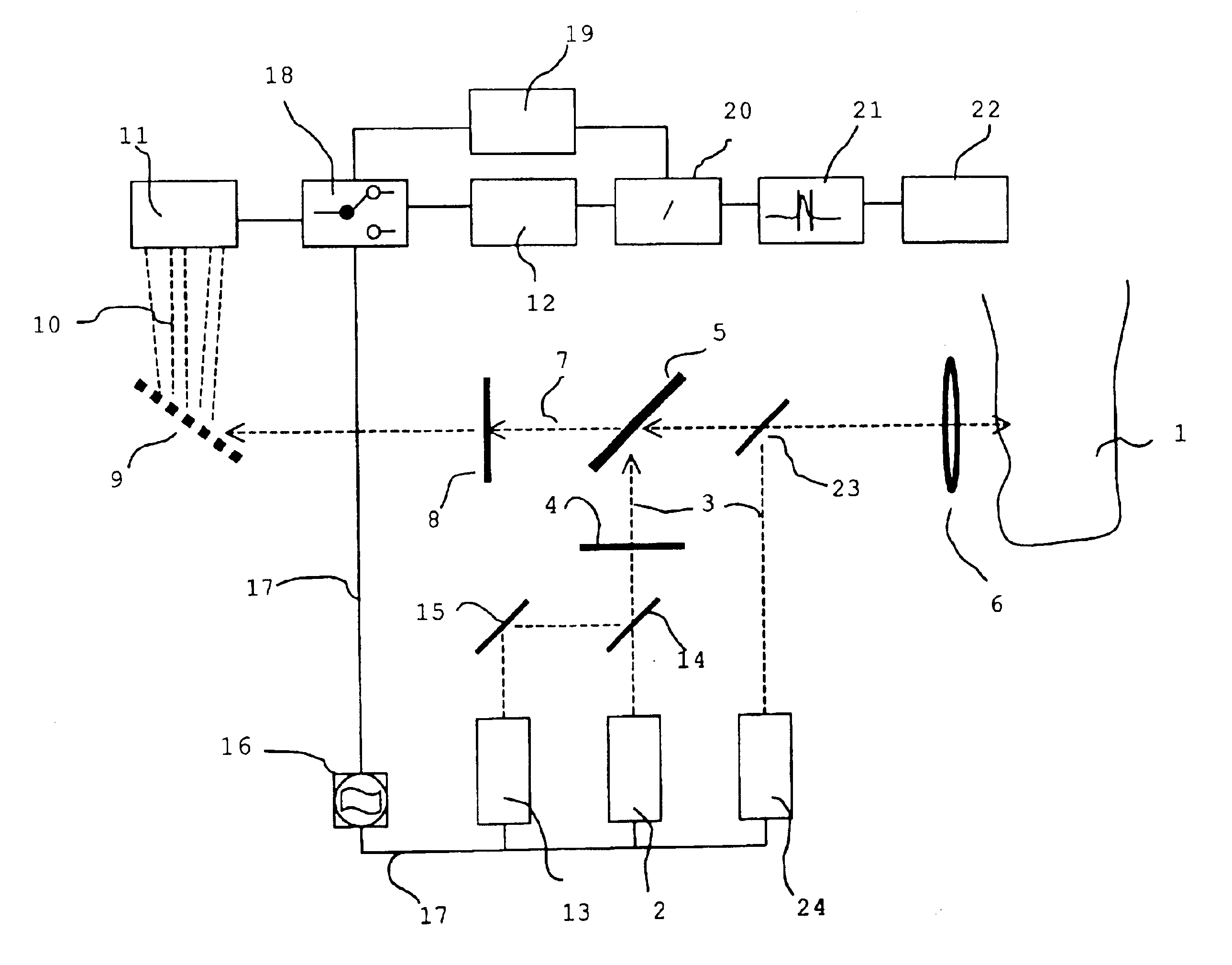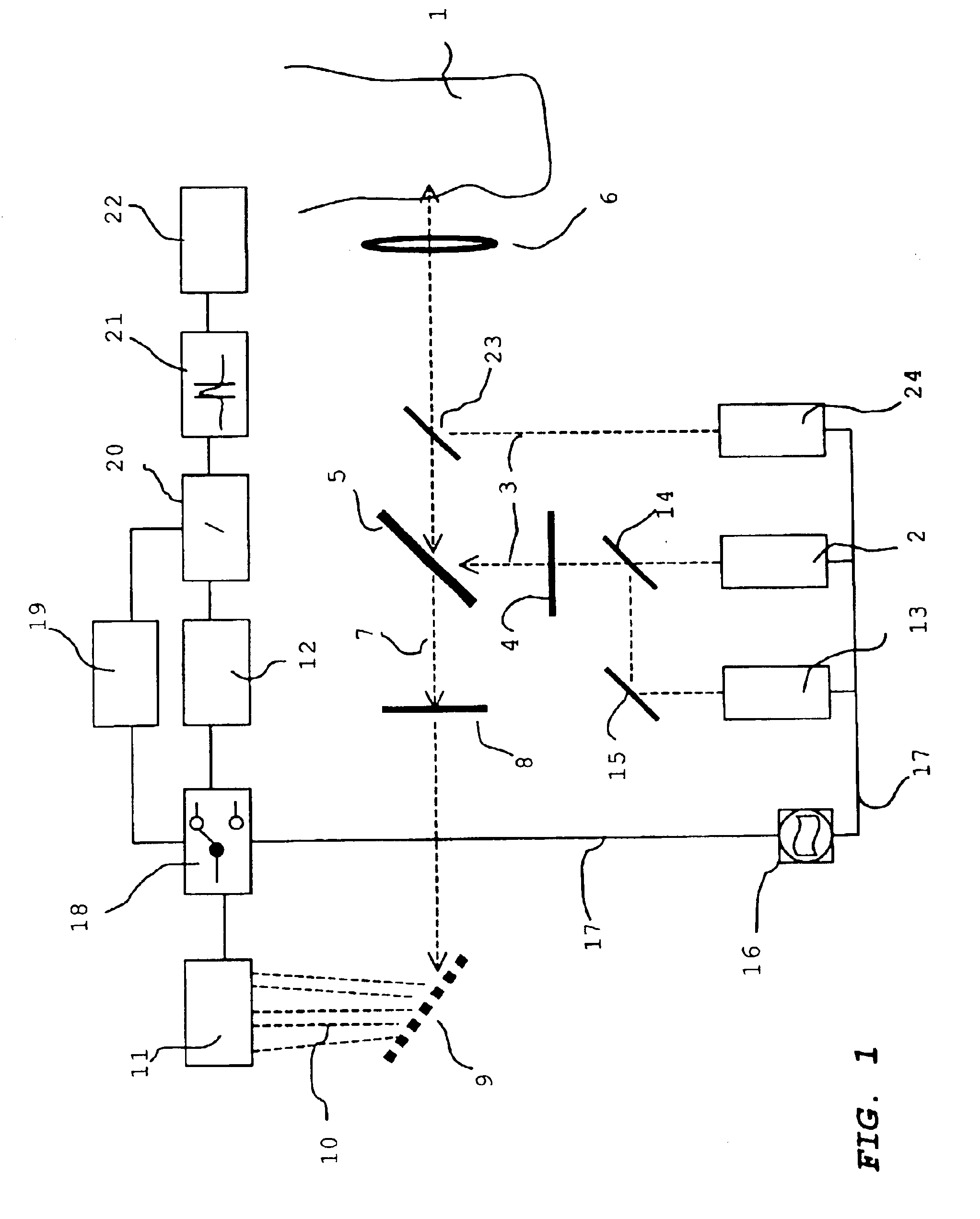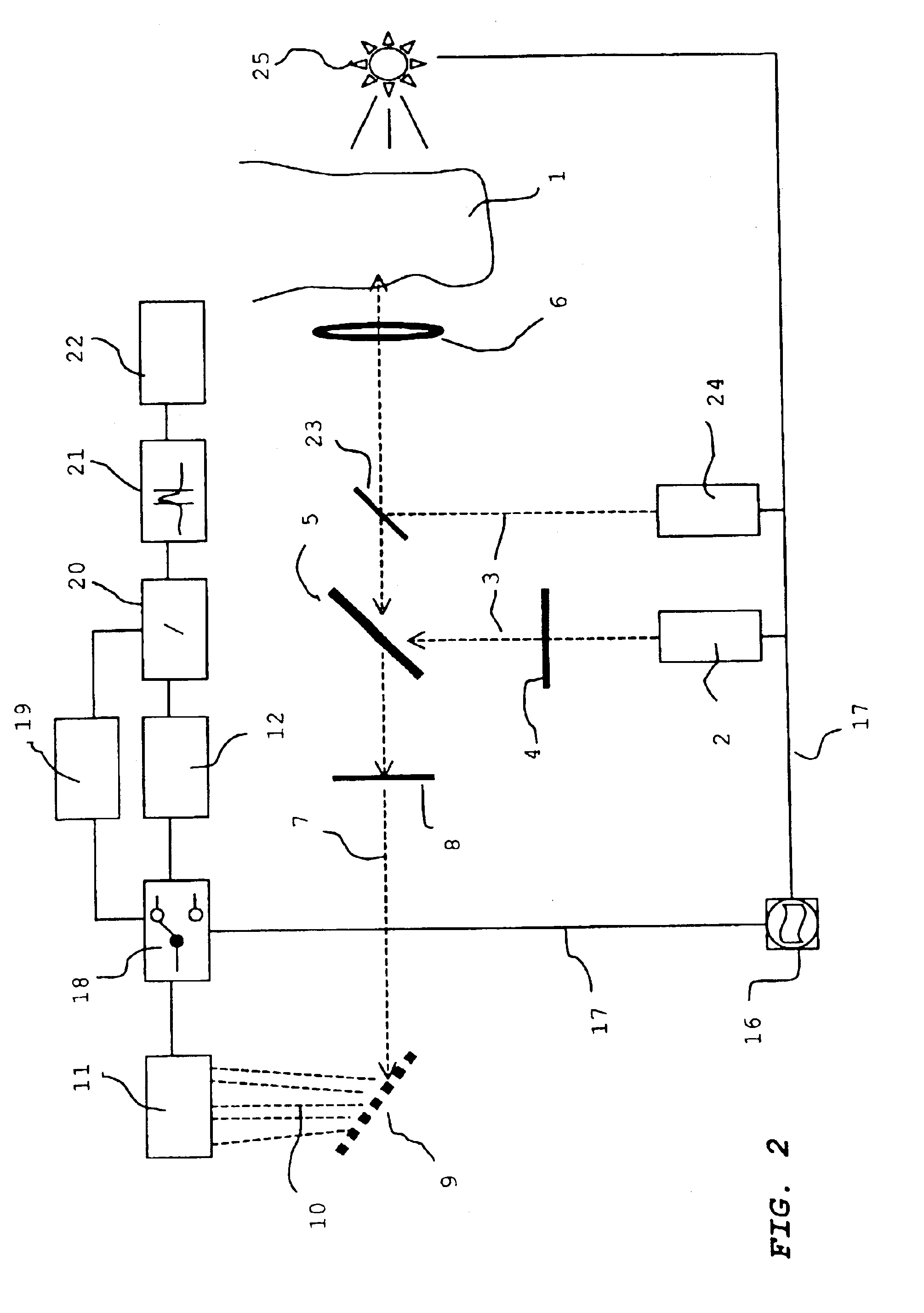Method and device for detecting substances in body fluids by Raman spectroscopy
a raman spectroscopy and substance technology, applied in the field of non-invasive detection or determination, can solve the problems of inability to investigate blood samples, inability to take blood samples in each event, and inability to take blood samples in hospitals or gp surgeries, etc., to achieve easy detection and analysis, low cost, and high reproducibility
- Summary
- Abstract
- Description
- Claims
- Application Information
AI Technical Summary
Benefits of technology
Problems solved by technology
Method used
Image
Examples
Embodiment Construction
FIG. 1 shows an embodiment of the basic set up for the implementation of an embodiment of the method according to the invention. The device for the non-invasive determination of a concentration of a substance in a body tissue 1 by Raman spectroscopy comprises a first light source 2 that serves for irradiating monochromatic primary light 3 of a first wavelength λ1 into body tissue 1. Primary light 3 passes through a first optical filter 4 that filters out remaining light, possibly present, of a wavelength other than λ1. This band pass filter 4 is particularly of advantage when a non-monochromatic light source 2 is used. The primary light 3 subsequently hits the output beam splitter 5 whose function is explained below. Behind an output beam splitter 5A a projection / collection optics 6 is arranged, projecting primary light 3 onto a spot of body tissue 1. In the shown embodiment the primary light 3 is focussed on an earlobe of a patient which is indicated on the right hand side in FIG. ...
PUM
| Property | Measurement | Unit |
|---|---|---|
| wavelength λ1 | aaaaa | aaaaa |
| wavelength λ1 | aaaaa | aaaaa |
| wavelength λexc | aaaaa | aaaaa |
Abstract
Description
Claims
Application Information
 Login to View More
Login to View More - R&D
- Intellectual Property
- Life Sciences
- Materials
- Tech Scout
- Unparalleled Data Quality
- Higher Quality Content
- 60% Fewer Hallucinations
Browse by: Latest US Patents, China's latest patents, Technical Efficacy Thesaurus, Application Domain, Technology Topic, Popular Technical Reports.
© 2025 PatSnap. All rights reserved.Legal|Privacy policy|Modern Slavery Act Transparency Statement|Sitemap|About US| Contact US: help@patsnap.com



